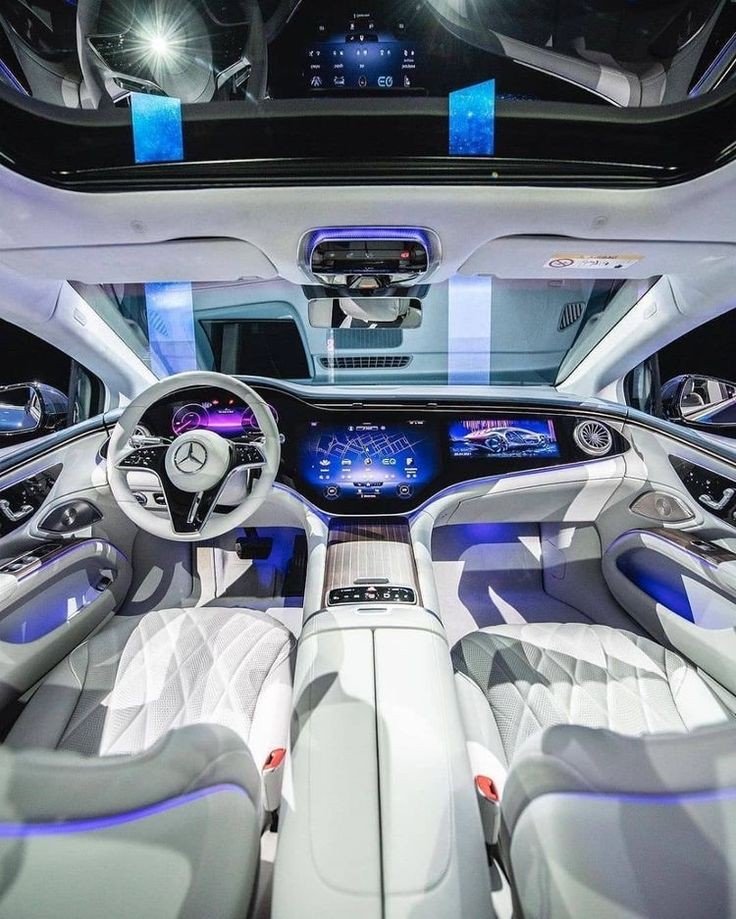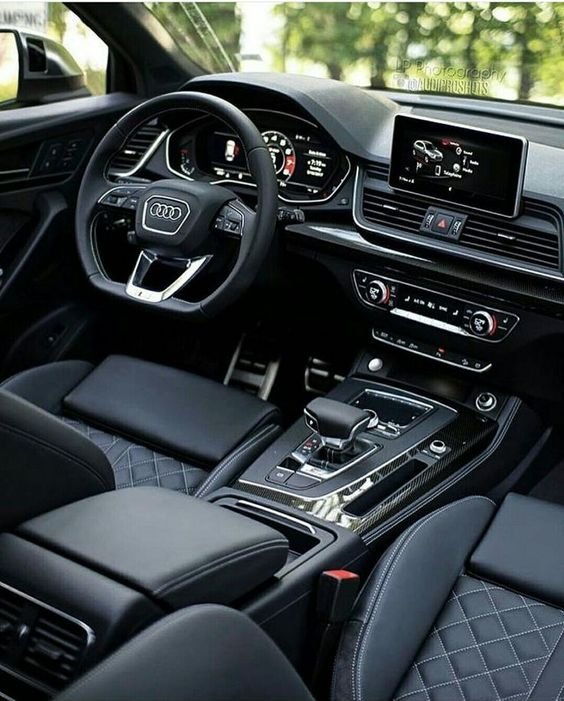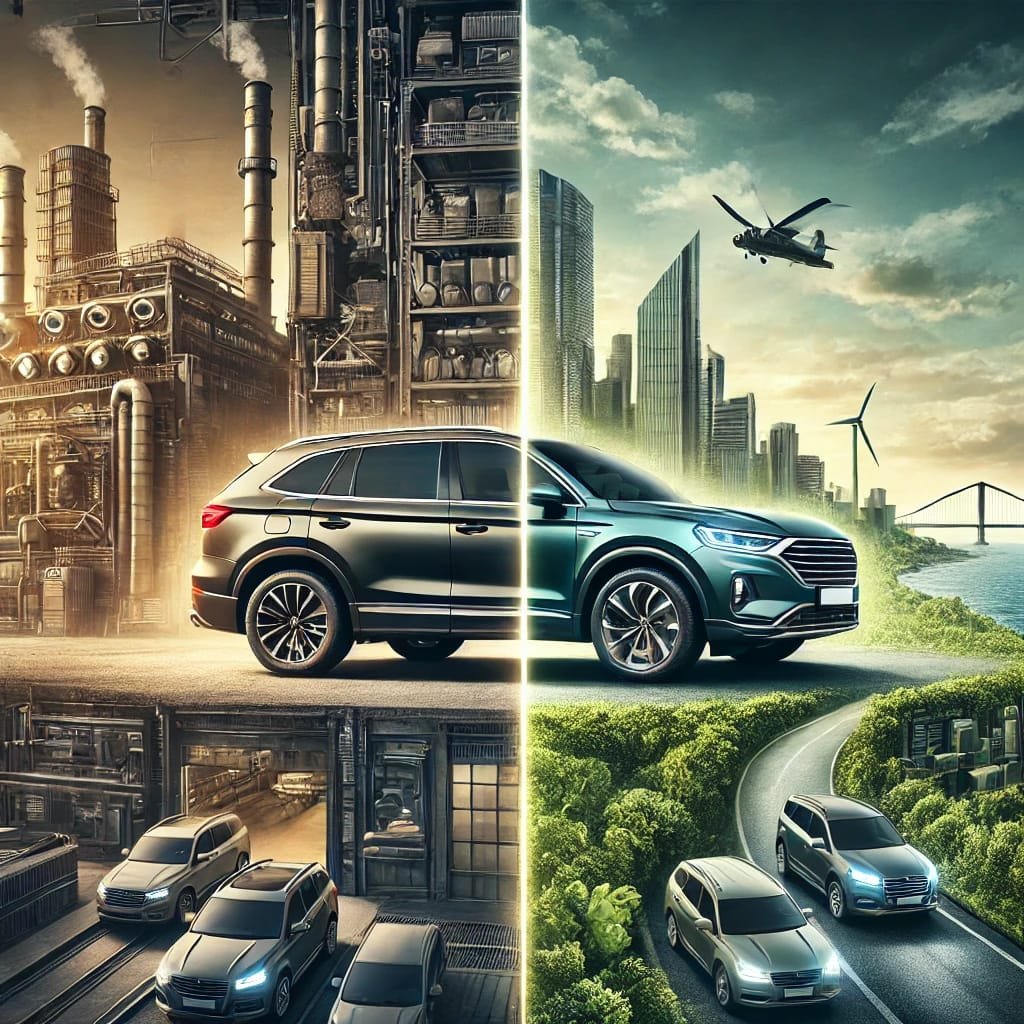
The Indian automotive industry is a key pillar of the nation’s economy, with far-reaching contributions that span employment, manufacturing, technological advancements, and international trade. In the fiscal year 2023-24 (FY24), the industry surpassed a significant milestone, crossing the Rs 20 lakh crore mark (around $240 billion) and cementing its role as a vital contributor to India’s GDP. This landmark achievement was highlighted by the Society of Indian Automobile Manufacturers (SIAM) President Vinod Aggarwal during the 64th Annual Automotive Component Manufacturers Association (ACMA) session.
This article delves into the current landscape of the Indian automotive industry, its role in economic growth, the strides made in technological transformation, and the future trajectory as the country moves towards achieving “Viksit Bharat” by 2047.
1. The Economic Powerhouse: Contribution to GDP and GST
In FY24, the Indian automotive industry’s contribution to the country’s economy surged to Rs 20 lakh crore. This remarkable achievement underscores the sector’s importance as a significant driver of economic growth and its contribution to India’s Gross Domestic Product (GDP). Currently, the automotive sector contributes around 6.8% to India’s GDP, with expectations for this share to grow in the coming years.
Contribution to GST Collection
Beyond GDP, the automotive industry plays a critical role in India’s tax revenue. The sector contributes around 14-15% of the total Goods and Services Tax (GST) collected in the country. This substantial contribution highlights the industry’s importance not only as a manufacturing and export powerhouse but also as a key player in public finance.
The growth in the automotive sector’s economic output reflects increased consumer demand, improved manufacturing capabilities, and the rising stature of the industry on the global stage.
2. Employment Generation: Direct and Indirect Contributions
The Indian automotive industry is one of the largest employers in the country, providing direct and indirect employment to millions of people. The industry’s ecosystem, which includes vehicle manufacturers, component suppliers, service providers, and aftermarket businesses, generates jobs across various sectors, including engineering, design, manufacturing, sales, and service.
Direct Employment
Vehicle manufacturers and component suppliers provide direct employment to a significant number of skilled and unskilled workers. Automakers employ engineers, technicians, and assembly line workers in their manufacturing plants. Additionally, Research and Development (R&D) departments hire professionals in fields like mechanical engineering, software development, and material science.
Indirect Employment
Indirectly, the industry supports jobs in ancillary industries such as steel, rubber, glass, and electronics. The expansive dealership networks and service centers also contribute to job creation in sales, customer service, and maintenance. The ripple effect of the automotive industry’s growth on employment is vast, contributing to economic stability and job creation across diverse sectors.
3. India’s Position in the Global Automotive Landscape
Globally, the Indian automotive industry has made impressive strides, positioning itself as a major player in several segments. India has now become the third-largest passenger vehicle market, the largest two- and three-wheeler market, and the third-largest commercial vehicle market in the world. These milestones reflect India’s rising prominence in the global automotive industry.
Passenger Vehicle Market
India’s passenger vehicle market has witnessed substantial growth, fueled by rising middle-class incomes, urbanization, and increased demand for personal mobility. Indian automakers like Tata Motors and Mahindra, along with global giants like Maruti Suzuki, Hyundai, and Toyota, have played a key role in meeting this growing demand.
Two and Three-Wheeler Market
India is the largest market for two- and three-wheelers globally, with millions of units sold annually. Affordable pricing, low maintenance costs, and the need for personal mobility in both rural and urban areas have driven the growth of this segment. Indian companies like Bajaj Auto and TVS Motor Company lead the way in both domestic sales and exports.
Commercial Vehicle Market
India’s commercial vehicle market is also the third-largest globally. The demand for commercial vehicles, including trucks and buses, is driven by infrastructure development, the growth of e-commerce, and an increase in transportation needs. Companies like Ashok Leyland and Tata Motors are leaders in this space, with a strong focus on innovation and meeting global standards.
4. Technological Advancements and Transformation
One of the key factors contributing to the growth of the Indian automotive industry is its commitment to technological transformation. Over the years, the industry has embraced innovation in various areas, from manufacturing processes to the development of new powertrains and the integration of advanced technologies like Artificial Intelligence (AI) and automation.
Electric and Hybrid Vehicles
The shift towards electric mobility is one of the most significant technological transformations in the Indian automotive industry. With a growing focus on sustainability and reducing carbon emissions, automakers are investing heavily in the development of electric vehicles (EVs) and hybrid technologies. The government’s push for electric mobility through initiatives like the Faster Adoption and Manufacturing of Hybrid and Electric Vehicles (FAME) scheme has further accelerated this transition.
CNG and Alternative Fuel Technologies
In addition to electric vehicles, the industry is also exploring alternative fuel technologies such as Compressed Natural Gas (CNG), Liquefied Natural Gas (LNG), and biofuels. These technologies offer a cleaner alternative to traditional gasoline and diesel engines, reducing the environmental impact of vehicles.
Hydrogen and Fuel Cell Technologies
Looking ahead, hydrogen and fuel cell technologies are gaining attention as potential game-changers in the quest for zero-emission vehicles. Several Indian automakers and research institutions are exploring the feasibility of hydrogen-powered vehicles, which could play a critical role in reducing the automotive sector’s carbon footprint in the future.
Advanced Driver Assistance Systems (ADAS)
The integration of advanced safety features is another area where the Indian automotive industry is making significant progress. Automakers are increasingly incorporating Advanced Driver Assistance Systems (ADAS) in vehicles, enhancing safety through features like lane-keeping assist, automatic emergency braking, and adaptive cruise control. As safety standards evolve, ADAS is expected to become a standard feature in many vehicles.
5. Reducing Import Dependence: Localization Initiatives
To strengthen its position as a global automotive hub, the Indian automotive industry has been working to reduce its dependence on imports, especially for high-tech components. SIAM and ACMA have been at the forefront of this initiative, identifying critical components for local production and setting ambitious targets for increasing localization.
Import Reduction Targets
In recent years, the industry has set a goal to reduce import content from 60% to 20% by 2025, with a focus on sourcing components domestically. This includes a wide range of automotive parts, from engine components to electronics and sensors. By reducing import dependence, the industry aims to enhance its self-reliance, improve supply chain resilience, and reduce costs.
Achievements and Future Goals
In the first phase of this localization drive, the industry achieved an import reduction of 5.8% over two years. Moving forward, the focus will be on manufacturing high-tech components domestically, such as electronic control units (ECUs), sensors, and semiconductors. These components are critical to the development of electric vehicles and connected car technologies, making their local production essential for the industry’s future growth.
6. The Shift to Clean and Safe Vehicles
As the Indian automotive industry grows, there is a strong emphasis on producing cleaner and safer vehicles. Environmental concerns and stringent emission regulations are driving the development of eco-friendly powertrains, while increasing consumer demand for safety features is pushing automakers to prioritize vehicle safety.
Emission Norms and Regulations
India has implemented strict emission norms, with the transition to Bharat Stage VI (BS-VI) emission standards in 2020 marking a significant step towards reducing vehicle emissions. These regulations require automakers to adopt cleaner technologies and improve fuel efficiency, contributing to a reduction in air pollution.
Cleaner Powertrains
In addition to electric and hybrid vehicles, automakers are exploring cleaner internal combustion engine (ICE) technologies, including more efficient gasoline and diesel engines, as well as alternative fuel vehicles powered by CNG, LNG, and biofuels. The shift towards cleaner powertrains is critical for meeting emission targets and addressing environmental concerns.
Vehicle Safety Standards
As consumer awareness about vehicle safety increases, automakers are responding by incorporating advanced safety features into their vehicles. The government has also introduced new safety regulations, including mandatory airbags, anti-lock braking systems (ABS), and electronic stability control (ESC) in vehicles. These measures are aimed at reducing road accidents and improving occupant safety.
7. The Third Automotive Mission Plan (2024-2047)
To guide the growth of the Indian automotive industry over the next two decades, the Ministry of Heavy Industries is developing the third Automotive Mission Plan (AMP), which will lay out a roadmap for the industry’s development from 2024 to 2047. This plan will be structured in three distinct phases:
- Phase 1 (2024-2030): Focus on accelerating the adoption of electric vehicles, reducing import dependence, and enhancing the localization of high-tech components.
- Phase 2 (2030-2037): Drive innovation in alternative fuel technologies, hydrogen-powered vehicles, and connected car technologies, while improving vehicle safety standards.
- Phase 3 (2037-2047): Position India as a global leader in automotive manufacturing, innovation, and sustainability, contributing to the nation’s goal of becoming a developed economy by 2047.
Industry Collaboration and Policy Alignment
The Automotive Mission Plan will serve as a guiding document for the entire automotive ecosystem, including vehicle manufacturers, component suppliers, and government agencies. It will help align the industry’s growth strategies with government policies and objectives, ensuring a coordinated effort to achieve the plan’s goals.
8. Challenges and Opportunities
While the Indian automotive industry has made significant progress, it faces several challenges that must be addressed to sustain its growth trajectory.
Skill Development
One of the major challenges is the skill gap in the workforce, particularly in areas related to new technologies like electric vehicles, hydrogen fuel cells, and advanced manufacturing techniques. Collaboration with educational institutions and investment in skill development programs will be crucial to ensure that the industry has a skilled workforce capable of meeting the demands of the future.
Quality Standards
Maintaining international quality standards is another challenge for the industry, particularly as it seeks to expand its presence in global markets. Ensuring that Indian-made vehicles and components meet the stringent quality standards of export markets will be essential for the industry’s global competitiveness.
Semiconductor Supply Chain
The growing demand for electronic components, particularly semiconductors, has exposed vulnerabilities in the global supply chain. The Indian automotive industry will need to develop strategic alliances with global semiconductor manufacturers and invest in domestic semiconductor production capabilities to mitigate supply chain disruptions.
The Indian automotive industry has come a long way, achieving remarkable growth and becoming a key contributor to the country’s economy. As it moves towards a future defined by technological innovation, sustainability, and global competitiveness, the industry will play an even more significant role in shaping India’s economic landscape.
With the support of government initiatives, industry collaboration, and a focus on reducing import dependence, the Indian automotive industry is poised to lead the way in the transition to cleaner, safer, and more advanced vehicles. As the country marches towards its goal of becoming a developed economy by 2047, the automotive sector will undoubtedly be at the forefront of this transformation, driving progress and prosperity for India.
ALSO READ: Top 10 Car Cleaning Tools







